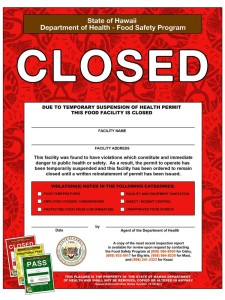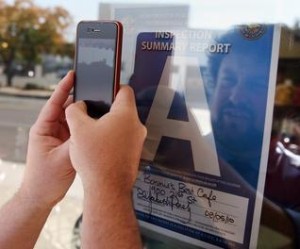To coach children in Australia, you need a Blue Card.
It’s some basic check to make sure you don’t have a history of …
I played hockey yesterday morning – I’m still sore – and was chatting with one of the league organizers while Amy came to pick me up (love her).
The organizer had been to a two-day course about Blue Card requirements for organizations, and liability, and I noted I was more concerned that the people preparing toasties – grilled cheese – in the common area at the arena on Sundays required no training in anything food safety.
Guess Queensland is sorta like Alabama that way.
As reported by the Montgomery Advertiser, it was a Tuesday afternoon, and 86 children became sick from staph bacteria at two Sunny Side Day Care Center locations. Quickly, questions arose about the day care center operations, about whether it was licensed, about why there were 323 children at two of the four locations, about what the child/adult ratio was, and whether there were any state guidelines to prevent what had happened.
Alabama is one of about a dozen states that have “church-exempt” day care centers. Sunny Side is one of them.
The centers were not licensed, and do not have to abide by any minimum state standards. They have to cooperate with the fire and health departments, but little or no oversight is mandated. Children and parents may visit unlicensed centers, but no state employees or officials do, said Calvin Moore, director of the child care division with the state department of human resources.
 The Montgomery Advertiser investigated the history of Sunny Side Day Care Center, and it was found that Sunny Side did not meet fire safety standards, and while the center received a 98 rating on a May food inspection, they were not consistent in their food reports.
The Montgomery Advertiser investigated the history of Sunny Side Day Care Center, and it was found that Sunny Side did not meet fire safety standards, and while the center received a 98 rating on a May food inspection, they were not consistent in their food reports.
Moore said the oversight is very different for licensed day care centers than for “church-exempt” centers.
“The main difference is that there aren’t any standards for a church-exempt program,” he said.
“It’s kind of tough to call what they’re required to do as ‘standards.’ They don’t amount to minimum standards and, inherently, that’s the main problem. My office is in charge of licensure, and we can’t monitor church-exempt programs in any way. I don’t know if they are visited by the state level.”
To become “church-exempt,” day care centers have to send affidavits for each child attending the center, Moore said. But they only do that annually. They also are required in the affidavits to state that the children who are enrolled there are updated in their immunizations. But that is a self-reporting process, Moore said.
“We can only verify that they have said they have done those things,” he said. “As long as they say the day care center is part of an intricate part of the church’s ministry, then we ‘OK’ that. As long as they meet that requirement, we issue that exemption.”
Sunny Side met those standards.
The report of staph bacteria raises concerns about adherence to policies set in place for the safety and care of young children.
However, by claiming exemption under United Family Service Outreach, a religious affiliation, Sunny Side does not have to follow the rules set in place by the state’s DHR, as state-licensed day cares do.
Sunny Side was contacted, but they did not provide any comment on the findings.









